Mayi Plus
The Feed the Future Haiti – Mayi Plus project seeks to improve the quality of maize seed supply, test new varieties for local adaptation and support the development of the maize seed industry in Haiti.
The Feed the Future Haiti – Mayi Plus project seeks to improve the quality of maize seed supply, test new varieties for local adaptation and support the development of the maize seed industry in Haiti.
The Heat Stress Tolerant Maize (HTMA) for Asia project is a public-private alliance that targets resource-poor people and smallholder farmers in South Asia who face weather extremes and climate-change effects. HTMA aims to create stable income and food security for resource-poor maize farmers in South Asia through development and deployment of heat-resilient maize hybrids.
South Asian farmlands have been increasingly experiencing climate change-related weather extremes. If current trends persist until 2050, major crop yields and the food production capacity of South Asia will decrease significantly – by 17 percent for maize – due to climate change-induced heat and water stress.
In response, CIMMYT and partners are developing heat stress-resilient maize for Asia. The project leverages the germplasm base and technical expertise of CIMMYT in breeding for abiotic stress tolerance, coupled with the research capacity and expertise of partners.
The Drought Tolerant Maize for Africa Seed Scaling (DTMASS) project was officially launched in 2014 with the aim to meet demand and improve access to good-quality maize through production and deployment of affordable and improved drought-tolerant, stress-resilient and high-yielding maize varieties for smallholder farmers.
Led by CIMMYT and implemented through in-country public and private partnerships, DTMASS emphasizes scaling up and scaling out of drought tolerant maize seed, and uptake of the same among smallholder farmers. Over its lifespan, the project aims to produce close to 12,000 metric tons of certified seed for use by approximately 400,000 households, or 2.5 million people, in six countries in eastern and southern Africa.
DTMASS target countries (Ethiopia, Kenya, Mozambique, Tanzania, Uganda and Zambia) account for 25 percent, or 252 million, of the people in sub-Saharan Africa, and 41 percent of the maize production areas. DTMASS builds on the progress made by Drought Tolerant Maize for Africa and other complementary CIMMYT maize projects in Africa, including Improved Maize for African Soils and Water Efficient Maize for Africa.
The Agricultural Innovation Program (AIP) for Pakistan is working to sustainably increase agricultural productivity and incomes in the agricultural sector through the promotion and dissemination of modern technologies/practices in the livestock, horticulture (fruits and vegetables) and cereals (wheat, maize and rice) sector. The CIMMYT-led project aims to foster emergence of a dynamic, responsive, and competitive system of science and innovation in Pakistan.
This unique project places particular emphasis on building partnerships between public research and those it serves, including farmers and the private sector. AIP operates through three activity windows: commissioned projects, a competitive grants system and human resource development. Within these activity windows AIP addresses complex agricultural systems, but is divided into four “science windows’” including cereals and cereal systems, livestock, vegetables and perennial horticulture. The key indicator of AIP’s success is the number of small farmers who adopt or benefit from productivity or value-enhancing technologies.
The long term goals of the project are food security, environmental protection, gender sensitization and poverty reduction through the adoption of sustainable technologies, resource management practices, advance agricultural models and improved systems.
Building resilience, self-reliance and a reliable business model
The Buena Milpa project in Guatemala, conducted in collaboration with the country’s Agricultural Science and Technology Institute (ICTA), is aimed at implementing a sustainable intensification strategy for agriculture while reducing poverty, malnutrition and environmental damage.
The project, managed in collaboration with the U.S. Agency for International Development’s Feed the Future program, is based in the highlands of Guatemala, a region recognized for its diversity of maize varieties, flora and fauna. Farmers grow a wide variety of crops, including beans, legumes, pumpkin, fruit trees and native plants.
Through Buena Milpa, CIMMYT’s Sustainable Intensification Strategy for Latin America, with its focus on biodiversity conservation, participative breeding, soil conservation, farm diversification and maize, helps to conserve maize landraces and other important plants in the region.
Guatemala, where maize is a key food staple, is known for its wide maize biodiversity. The maize fields of most highland farmers are part of farm systems which includes animal husbandry (chickens, sheep or cattle). These complex farm systems diversify diets diet and sources of family income.
A range of soil conservation methods popular with farmers help preserve biodiversity. A variety of grasses, trees and other plants are used to ensure soil and field conservation.
Most of the maize in the region is grown on steep hillsides. Farmers have very little land and use as much of it as possible for crop production. Water and soil conservation practices aim to reduce the propensity to landslides, decrease erosion through soil cover, minimize the effects of erosion and help to settle the materials and soils mobilized through erosion.
The Buena Milpa project improves native maize landraces, increases productivity, improves plant architecture, grain and seed quality, thereby mitigating losses due to the effects of climate change and decreasing maize reserves, especially during periods of seasonal hunger.
Most farmers involved in the project belong to a Mayan ethnic group that has historically been marginalized and excluded from development processes. A social inclusion strategy fosters the participation of indigenous people, women, children, the young and the elderly in order to benefit everyone involved in maize production systems.
Links with other actors foster activities to generate information that raises awareness about how people are socially excluded, to inform and sensitize local actors about social dynamics that limit inclusion.
The Stress Tolerant Maize for Africa (STMA) project aims to diminish devastating constraints in maize production across sub-Saharan Africa. The project develops improved maize varieties with resistance and tolerance to drought, low soil fertility, heat, diseases such as Maize Lethal Necrosis and pests affecting maize production areas in the region.
STMA operates in eastern (Ethiopia, Kenya, Tanzania, Uganda), southern (Malawi, South Africa, Zambia, Zimbabwe) and West Africa (Benin, Ghana, Mali, Nigeria). These countries account for nearly 72 percent of all maize area in sub-Saharan Africa and include more than 176 million people who depend on maize-based agriculture for their food security and economic well-being. Climate change effects like drought, a lack of access to resources like fertilizer and other stresses increase the risk of crop failure that negatively affects income, food security and nutrition of millions of smallholder farmers and their families.
The project will develop 70 new stress-tolerant varieties using innovative modern breeding technologies, and promote improved stress-tolerant varieties expected to increase maize productivity up to 50 percent. The project aims to produce estimated 54,000 tons of certified seed to put into the hands of more than 5.4 million smallholder farmer households by the end of 2019.
Objectives
The Drought Tolerant Maize for Africa project aims to mitigate drought and other constraints to maize production in sub-Saharan Africa, increasing maize yields by at least one ton per hectare under moderate drought and with a 20 to 30 percent increase over farmers’ current yields, benefiting up to 40 million people in 13 African countries. The project brings together farmers, research institutions, extension specialists, seed producers, farmer community organizations and non-governmental organizations. It is jointly implemented by CIMMYT and the International Institute for Tropical Agriculture, in close collaboration with national agricultural research systems in participating nations. Millions of farmers in the region are already benefiting from the outputs of this partnership, which includes support and training for African seed producers and promoting vibrant, competitive seed markets.
Achievements:
Principal coordinator
Tsedeke Abate
Intensive cereal cropping systems that include rice, wheat and/or maize are widespread throughout South Asia. These systems constitute the main economic activity in many rural areas and provide staple food for millions of people. The decrease in the rate of growth of cereal production, for both grain and residue, in South Asia is therefore of great concern. Simultaneously, issues of resource degradation, declining labor availability and climate variability pose steep challenges for achieving the goals of improving food security and rural livelihoods.
The Cereal Systems Initiative for South Asia (CSISA) was established in 2009 to promote durable change at scale in South Asia’s cereal-based cropping systems.
The project’s aim is to enhance the productivity of cereal-based cropping systems, increase farm incomes and reduce the environmental footprint of production through sustainable intensification technologies and management practices.
Operating in rural “innovation hubs” in Bangladesh, India and Nepal, CSISA complements regional and national efforts and involves public, civil society and private sector partners in the development and dissemination of improved cropping systems, resource-conserving management technologies, policies and markets. CSISA supports women farmers by ensuring their access and exposure to modern and improved technological innovations, knowledge and entrepreneurial skills that can help them become informed and recognized decision makers in agriculture.
The project is led by CIMMYT with partners the International Rice Research Institute and the International Food Policy Research Institute and funded by the U.S. Agency for International Development and the Bill & Melinda Gates Foundation.

The Ethiopian wheat sector has seen progress since the early 2000s, more than doubling the average farm yields from 1.13 tons per hectare in 1998/99 to 2.74 tons per hectare in 2017/18. Progressive farmers who plant improved wheat varieties and follow recommended agronomic practices could harvest four to six tons per hectare in high-potential wheat growing areas. However, the production is not keeping up with the growing wheat demand: imports reached over 1.5 million tons last year. The Ethiopian government has announced recently that the country should become wheat self-sufficient over the next four years.
One of the biggest wheat production challenges in Ethiopia has been the stem rust and yellow rust diseases caused by Pucccinia spp, which severely affected popular wheat varieties like Kubsa, Galema and Digalu that wiped out from production.
In response to these losses, the International Maize and Wheat Improvement Center (CIMMYT) started an emergency project to multiply and disseminate rust-resistant wheat varieties in the affected regions in 2014, with support from USAID.
The following year, CIMMYT launched the Seed Multiplication and Delivery of High Yielding Rust Resistant Bread and Durum Wheat Varieties to Ethiopian Farmers project. It benefitted people in 54 woredas (districts) of 4 regions: Amhara, Oromia, SNNP and Tigray. CIMMYT collaborated with the Ethiopian Institute of Agricultural Research (EIAR), regional agricultural research institutes and the regional bureaus of agriculture.
This wheat seed scaling project wrapped up with a closure workshop on March 7, 2019. Organized by CIMMYT and EIAR, it gathered representatives from USAID, policymakers, researchers and other governmental and non-governmental institutions.
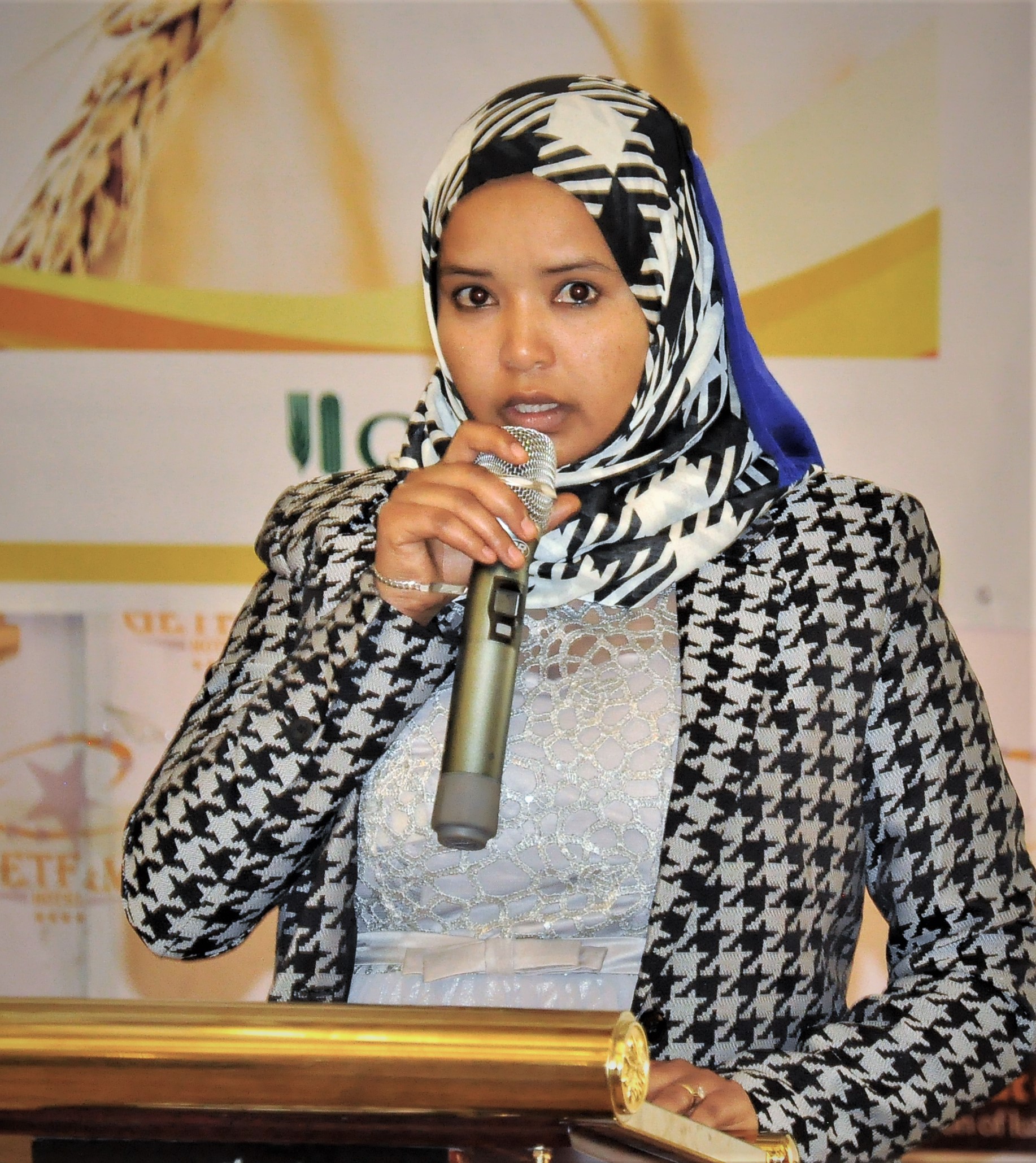
State minister of agriculture Aynalem Nigussie noted that the project boosted farmers’ productivity thanks to better seeds, improved farming practices and increased knowledge to deal with wheat rust diseases. She recognized that the project aligned with national priorities, as the government is devising a new seed policy to address the current challenges of the Ethiopian wheat seed sector.
CIMMYT’s representative in Ethiopia, Bekele Abeyo, highlighted some of the project outcomes. Some of the achievements in the past four years included the release and demonstration of 23 wheat varieties — 18 bread and 5 durum types —, increased access to these improved seeds for 131,132 households and production of 39,750 tons of wheat grain. Extension agents from 54 woredas participated in training in wheat rust management, recommended agronomic packages for the new wheat varieties, and field data collection and management.
Lessons learned
Abeyo explained that the project could reach a high number of farmers thanks to effective teamwork between the various stakeholders, seed support on revolving bases and a decentralized seed production to reach even remote places. Clustering farmers’ plots favored quality seed production.
Participants flagged weak market linkages, particularly for farmers producing durum wheat, , as a bottleneck to address. Workshop participants recommended the establishment of a wheat task force involving the private sector and with continuous support from funders like USAID.
The director general of EIAR, Mandefro Nigusse, said that the issues raised are inputs for further actions, and some will have to be directed to researchers and breeders to come up with additional solutions for the challenges the wheat sector is facing.
Eyasu Abrha, Advisor to the Minister of Agriculture, officially closed the workshop. He noted that the government of Ethiopia is putting effort into ensuring nutritional and food security, and that projects such as this one are important to address critical challenges in the sector. Abrha acknowledged the support of CIMMYT, EIAR and USAID, and called for a continued collaboration with the government of Ethiopia to meet nutritional and food security goals.
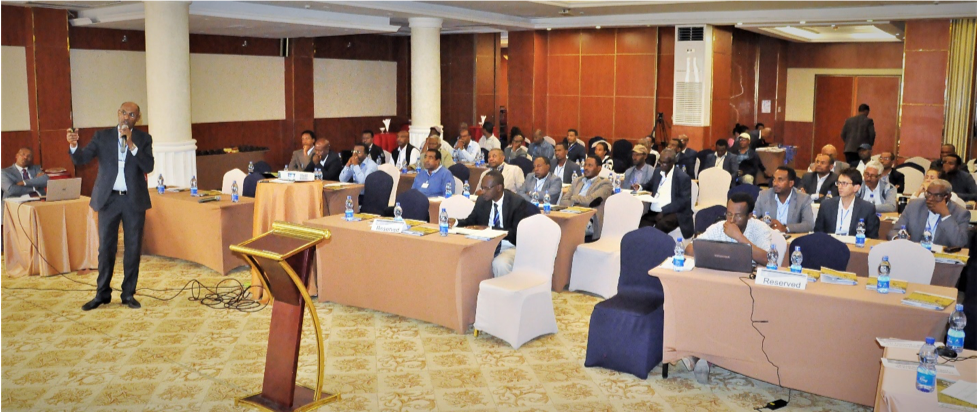
Pieter Rutsaert is a markets and value chain specialist with CIMMYT, based in Kenya. His work focuses on the demand side of formal seed systems development in Eastern Africa with special focus on the role of agro-dealers, farmer drivers for varietal turnover and collecting market intelligence data for breeding priorities.
He obtained his MSc in Tropical Natural Resources Management from KULeuven and a PhD from Ghent University in Belgium. Before joining CIMMYT, he worked as a Postdoctoral Fellow at IRRI in the Philippines and as research director for Haystack International, a market research consultancy firm in Belgium.

Agrodealers play a pivotal role in delivering the gains of the green revolution to millions of smallholders in Africa. Reaching even the most remote corners of the continent, they give farmers access to agricultural inputs and services.
So far, seed systems research has mainly focused on the factors influencing farmers’ adoption of or seed companies’ investment in new varieties. However, little is known about independent agrodealers, who play an important role in the “last mile” of seed systems, distributing improved maize seeds and fertilizers as well as giving agronomic advice. There is a gap of knowledge about who they are, their needs and constraints, and the ways in which they secure and develop their businesses.
Understanding how to better support agrodealers is important for the International Maize and Wheat Improvement Center (CIMMYT), to ensure that new varieties reach the largest possible number of farmers. Under the Stress Tolerant Maize for Africa (STMA) project, CIMMYT has launched a new research effort to better understand agrodealers in Kenya, with a specific focus on maize seed marketing.
Researchers are now testing the tools and expect to begin field work in March 2019, during the next maize planting season. “We want to collect detailed quantitative and qualitative data about the way agrodealers outsource and choose their maize varieties, and how they market these seeds to farmers,” explained CIMMYT associate scientist Pieter Rutsaert, who leads the study. This research will help government agencies, NGOs and funders to design better interventions related to agrodealers, for greater and more sustainable impact.

The million-shilling question
The way questions are selected and phrased, and data collected, is critical. “Figuring out how to ask the right question to the right person is a hard business, especially when we ask agrodealers to evaluate their own performance,” recognized Rutsaert. For example, it could be challenging to estimate the importance of maize seed sales if owners are hesitant to provide details about their businesses to outsiders. Anticipating the challenges of collecting reliable and comparable data, Rutsaert’s team will use visual tools, like illustrated cards, to facilitate conversations with interviewees. They will also use innovative exercises, like the shop investment game, where owners are asked how they would invest one million Kenyan shillings (about US$10,000).
Standing behind the counter of her shop, selling bags of feeding supplements for dairy cattle and small pesticide bottles on dusty shelves, Philomena Muthoni Mwangi explained she had run out of maize seeds for sale. This small agrodealer in the village of Ngarariga, in central Kenya, will restock her maize seeds from a big agrovet shop nearby at the onset of the rainy season.
This is quite common, as agrodealers do not take risks when it comes to selling new varieties. Not knowing the future demand, leftover seed stock after the planting season would severely reduce Mwangi’s potential profit, as margins per bag are low. To address this issue, CIMMYT researchers will conduct an intercept farmer survey in the coming weeks, to better understand what farmers look for when buying maize seeds.
Agrodealers are not a homogeneous group. Ranging from large one-stop shops to small shacks, their business models, seed marketing strategy and type of clients may differ a lot. This study will provide useful insights to design targeted seed scaling strategies that consider all kinds of agrodealers, moving away from a one-size-fits-all approach.
The Stress Tolerant Maize for Africa (STMA) project is funded by the Bill & Melinda Gates Foundation and the United States Agency for International Development (USAID).
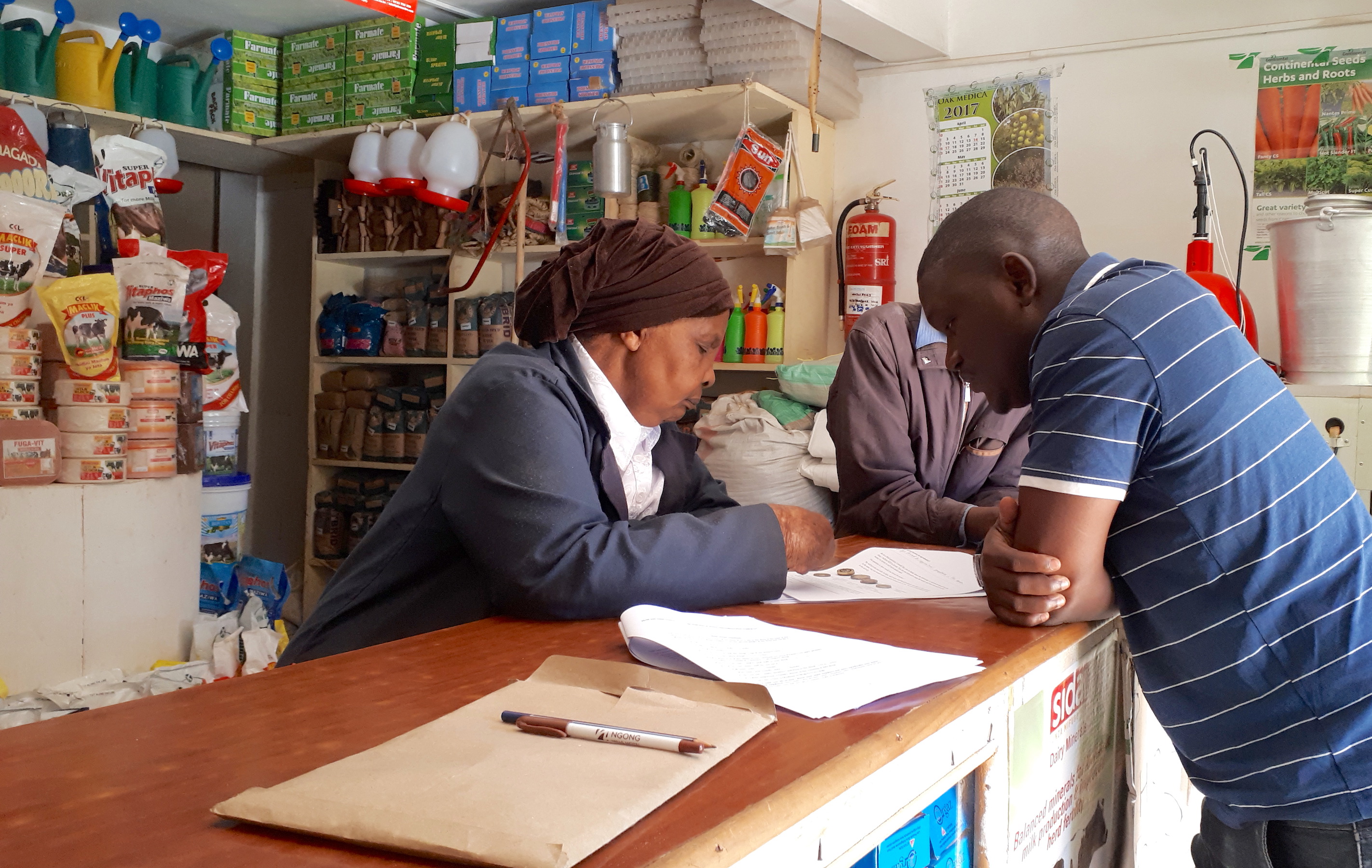
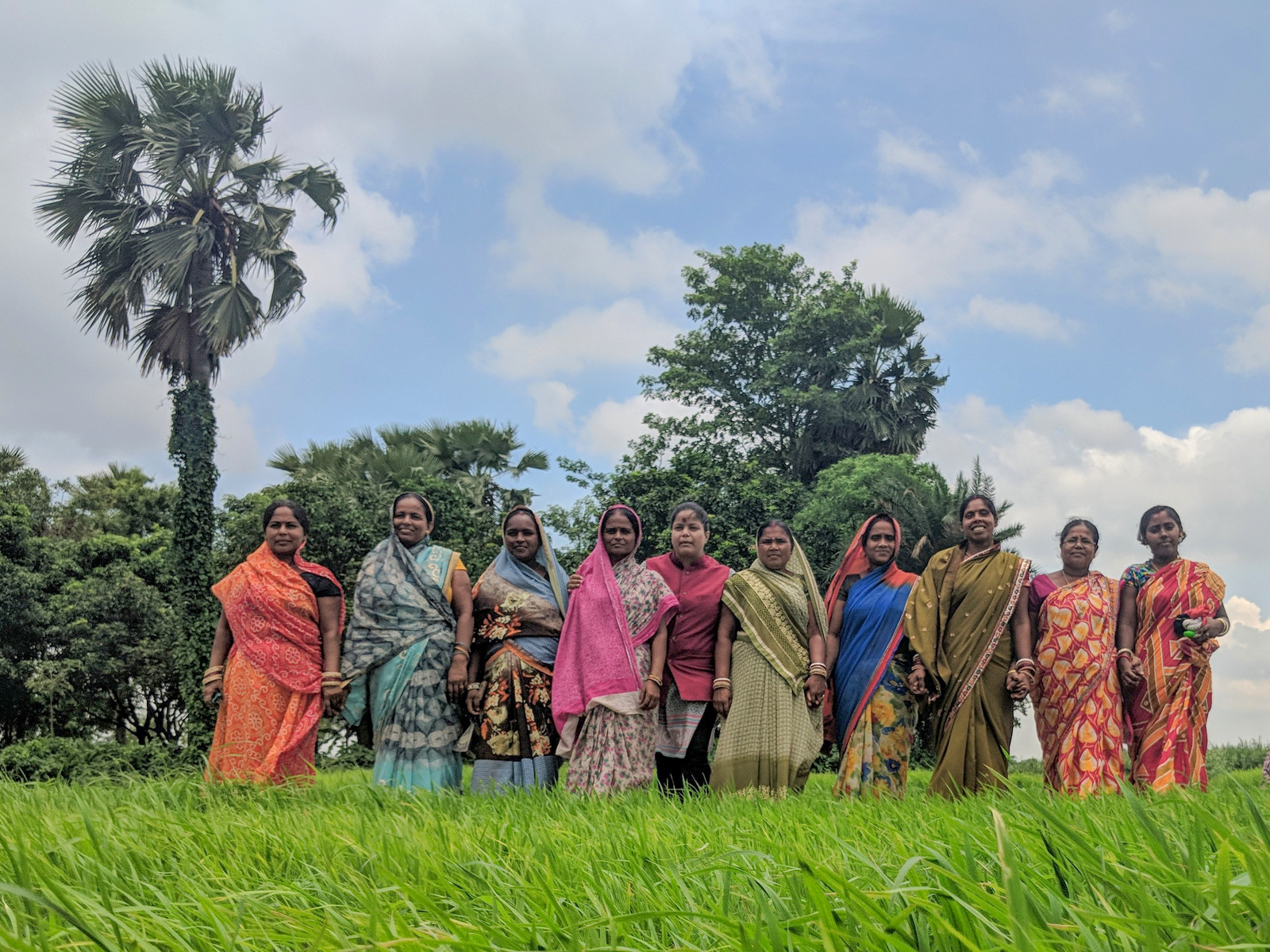
Self-help groups in Bihar, India, are putting thousands of rural women in touch with agricultural innovations, including mechanization and sustainable intensification, that save time, money, and critical resources such as soil and water, benefiting households and the environment.
The Bihar Rural Livelihoods Promotion Society, locally known as Jeevika, has partnered with the Cereal Systems Initiative for South Asia (CSISA), led by the International Maize and Wheat Improvement Center (CIMMYT), to train women’s self-help groups and other stakeholders in practices such as zero tillage, early sowing of wheat, direct-seeded rice and community nurseries.
Through their efforts to date, more than 35,000 households are planting wheat earlier than was customary, with the advantage that the crop fully fills its grain before the hot weather of late spring. In addition, some 18,000 households are using zero tillage, in which they sow wheat directly into unplowed fields and residues, a practice that improves soil quality and saves water, among other benefits. As many as 5,000 households have tested non-flooded, direct-seeded rice cultivation during 2018-19, which also saves water and can reduce greenhouse gas emissions.
An autonomous body under the Bihar Department of Rural Development, Jeevika is also helping women to obtain specialized equipment for zero tillage and for the mechanized transplanting of rice seedlings into paddies, which reduces women’s hard labor of hand transplanting.
“Mechanization is helping us manage our costs and judiciously use our time in farming,” says Rekha Devi, a woman farmer member of Jeevika Gulab self-help group of Beniwal Village, Jamui District. “We have learned many new techniques through our self-help group.”
With more than 100 million inhabitants and over 1,000 persons per square kilometer, Bihar is India’s most densely-populated state. Nearly 90 percent of its people live in rural areas and agriculture is the main occupation. Women in Bihar play key roles in agriculture, weeding, harvesting, threshing, and milling crops, in addition to their household chores and bearing and caring for children, but they often lack access to training, vital information, or strategic technology.
Like all farmers in South Asia, they also face risks from rising temperatures, variable rainfall, resource degradation, and financial constraints.
Jeevika has formed more than 700,000 self-help groups in Bihar, mobilizing nearly 8.4 million poor households, 25,000 village organizations, and 318 cluster-level federations in all 38 districts of Bihar.
The organization also fosters access for women to “custom-hiring” businesses, which own the specialized implement for practices such as zero tillage and will sow or perform other mechanized services for farmers at a cost. “Custom hiring centers help farmers save time in sowing, harvesting and threshing,” said Anil Kumar, Program Manager, Jeevika.
The staff training, knowledge and tools shared by CSISA have been immensely helpful in strengthening the capacity of women farmers, according to D. Balamurugan, CEO of Jeevika. “We aim to further strengthen our partnership with CSISA and accelerate our work with women farmers, improving their productivity while saving their time and costs,” Balamurugan said.
CSISA is implemented jointly by the International Maize and Wheat Improvement Center (CIMMYT), the International Food Policy Research Institute (IFPRI) and the International Rice Research Institute (IRRI). It is funded by the Bill & Melinda Gates Foundation and the United States Agency for International Development (USAID).

To keep up with growing maize demand, breeders aim at optimizing annual yield gain under various stress conditions, like drought or low fertility soils. To that end, they identify the genetic merit of each individual plant, so they can select the best ones for breeding.
To improve that process, researchers at the International Maize and Wheat Improvement Center (CIMMYT) are looking at cost-effective ways to assess a larger number of maize plants and to collect more accurate data related to key plant characteristics. Plant phenotyping looks at the interaction between the genetic make-up of a plant with the environment, which produces certain characteristics or traits. In maize, for example, this may manifest in different leaf angles or ear heights.
Recent innovations in digital imagery and sensors save money and time in the collection of data related to phenotyping. These technologies, known as high-throughput phenotyping platforms, replace lengthy paper-based visual observations of crop trials.
Authors of a recent review study on high-throughput phenotyping tools observe that obtaining accurate and inexpensive estimates of genetic value of individuals is central to breeding. Mainassara Zaman-Allah, an abiotic stress phenotyping specialist at CIMMYT in Zimbabwe and one of the co-authors, emphasizes the importance of improving existing tools and developing new ones. “Plant breeding is a continuously evolving field where new tools and methods are used to develop new varieties more precisely and rapidly, sometimes at reduced financial resources than before,” he said. “All this happens to improve efficiency in breeding, in order to address the need for faster genetic gain and reduction of the cost of breeding.”
“Under the Stress Tolerant Maize for Africa (STMA) project, we are working on implementing the use of drone-based sensing, among other breeding innovations, to reduce time and cost of phenotyping, so that the development of new varieties costs less,’’ said Zaman-Allah. “The use of drones cuts time and cost of data collection by 25 to 75 percent compared to conventional methods, because it enables to collect data on several traits simultaneously — for example canopy senescence and plant count,” he explained.
Another great innovation developed under this CIMMYT project is what Zaman-Allah calls the ear analyzer. This low-cost digital imaging app allows to collect maize ear and kernel trait data 90 percent faster. This implies higher productivity and rigor, as more time is dedicated to data analysis rather than time spent on data collection. Using digital image processing, the ear analyzer gives simultaneous data of more than eight traits, including ear size and number, kernel number, size and weight.

Some national agricultural research systems and NGOs have adopted this digital imagery tool to better assess maize yields in farmers’ fields. For instance, CIMMYT and GOAL have used this tool to assess the extent of fall armyworm impact on maize crops yield in eastern Zimbabwe.
Scientists are exploring the use of different sensors for phenotyping, such as Red, Green and Blue (RGB) digital imaging or Light Detection and Ranging (LIDAR) devices. Infrared thermal and spectral cameras could lead to further progress towards faster maize breeding.
Such sensors can help collect numerous proxy data relating to important plant physiological traits or the plant environment, like plant height and architecture, soil moisture and root characteristics. This data can be used to assess the maize crop yield potential and stress tolerance.
Such breeding innovations are also making maize research more responsive to climate change and emerging pests and diseases.
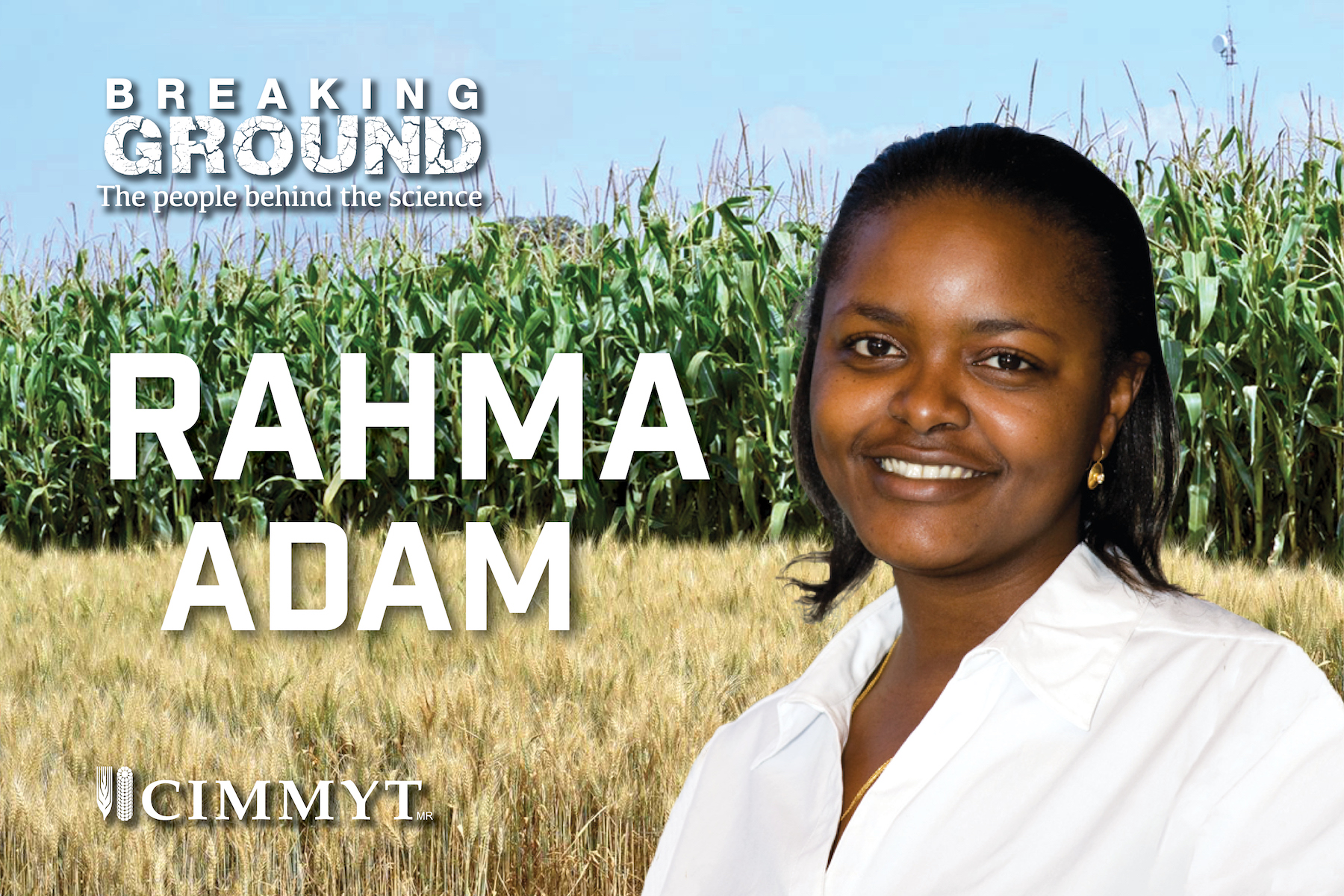
Despite great innovations in African agriculture in recent years, much of the continent still struggles to feed itself. With the population growing at an unprecedented rate, avoiding fatal food insecurity lies in the ability to maximize agricultural capacity.
Sociologist Rahma Adam believes there is one vital resource that remains untapped. One which, when unleashed, will not only increase food security but also boost livelihoods: the human capital of Africa’s women and youth.
“Smallholder production and livelihoods are stifled by the unequal access woman and youth have to farming information and resources, compared to men,” said Adam. “Limited access to land and technical services inhibits their agricultural productivity and holds back the food security of all.”
As a gender and development specialist with the International Maize and Wheat Improvement Center (CIMMYT), Adam adds a social inclusion lens to Africa’s development dialogue. Her research asks questions as to why women and youth are overrepresented among the poor and how to improve their access to agricultural training and markets.
The interaction between biology and anthropology has fascinated Adam since she was an undergraduate student at Macalester College. However, it was not until researching women and men in the local food markets of her native Dar es Salaam, Tanzania — as part of an exercise for her master’s degree in Public Policy at Harvard University — that she realized how social equity could improve the livelihoods of all African farmers.
“Working alongside farming women, I saw first-hand the disproportionate number of challenges they face to overcome poverty, gather finance for inputs, produce enough food to sustain a family and improve their livelihoods. However, I also saw their potential,” Adam explained.
Inspired to tackle these complex issues, she got her doctoral degree in rural sociology, with a focus on agriculture, gender and international development, from Pennsylvania State University. Following an early career with nonprofits and the World Bank, she joined CIMMYT as a gender and development specialist in 2015.
Since then, Adam has led research on how best to lift the agricultural productivity of women and youth to its full potential. Working with the Sustainable Intensification for Maize-Legumes Cropping Systems for Food Security in Eastern and Southern Africa (SIMLESA) project, she analyzed the role of gender and social inclusion in maize and legume value chains in Ethiopia, Kenya, Mozambique and Tanzania. She also identified intervention points to achieve gender and age equity across various nodes from field to plate, for example among producers, agrodealers, traders, processors and breeders.
“Promoting women and youth participation in agricultural value chains improves food security and livelihoods,” she explained. “Allowing these groups to have a voice and encouraging their leadership in farmer groups promotes their participation in agriculture.”
Partnerships for social inclusion
In eastern and southern Africa’s maize and legume farming systems, research shows that in most cases men have the final decision over maize crop production. Women have increased decision-making power regarding certain legumes, such as cowpeas and groundnuts, as they are mostly only for household consumption.
Adam’s work with SIMLESA found that promoting women’s participation in the production of legumes as cash crops is an opportunity to empower them, increase their household income and their food security.
Connecting women and youth to value chains through Agricultural Innovation Platforms improves their access to markets, credit, farming information and capacity development, she said. These platforms bring together farmers with extension workers, researchers, agrodealers, and NGO practitioners, so they can work together to improve maize and legume conservation agriculture-based sustainable intensification.
“It is important policy and development decision makers see that research demonstrates entry points to encourage women and youth to take an active role in value chains and improve productivity,” Adam said.
“You don’t want your research to sit on a shelf. This is why science policy dialogues — like the SIMLESA local, national and regional policy forums taking place this year — are important to ensure that research is introduced into the political landscape.”
An inclusive approach to research
Research must be designed and implemented in a way that women and men, including youth, can participate in and benefit from, Adam explained. They need to be considered in the research process, so they can increase their control of productive assets, participate in decision making, and decrease their labor burdens.
Adam has recently joined CIMMYT’s Stress Tolerant Maize for Africa (STMA) project to unpack gender issues in the formal maize seed sector. She will examine the relationship between gender and adoption of drought-tolerant and other improved varieties of maize. Adam will also analyze and categorize the differences in maize trait preferences between male and female farmers, and she will develop materials to integrate gender considerations in formal maize seed sector development.
“This information will be used by breeders to develop new maize varieties which are valuable to farmers and therefore have an increased chance of adoption,” the sociologist explained. “It will also help stakeholders get an idea of the rate men and women adopt improved varieties, and how they contribute to the evolution and performance of the seed sector in eastern and southern Africa.”
Providing training and consultation to her peers on gender and social inclusion is another important component of Adam’s work at CIMMYT. In June she will deliver a webinar on gender in research for CGIAR centers. At the end of the year she will participate in a regional seed sector workshop with other CGIAR experts, seed companies and NGOs, to ensure that partners use gender and social inclusion research.
Funded by the Australian Centre for International Agricultural Research (ACIAR), the SIMLESA project was led by the International Maize and Wheat Improvement Center (CIMMYT) in collaboration with the Rwanda Agricultural Board (RAB), CGIAR centers and national agricultural research institutes in Ethiopia, Kenya, Malawi, Mozambique, Tanzania and Uganda. Other regional and international partners include the Queensland Alliance for Agriculture and Food Innovation (QAAFI) at the University of Queensland, Australia, and the Association for Strengthening Agricultural Research in Eastern and Central Africa (ASARECA).
STMA is implemented by CIMMYT and is funded by the Bill & Melinda Gates Foundation and the United States of Agency for International Development (USAID).
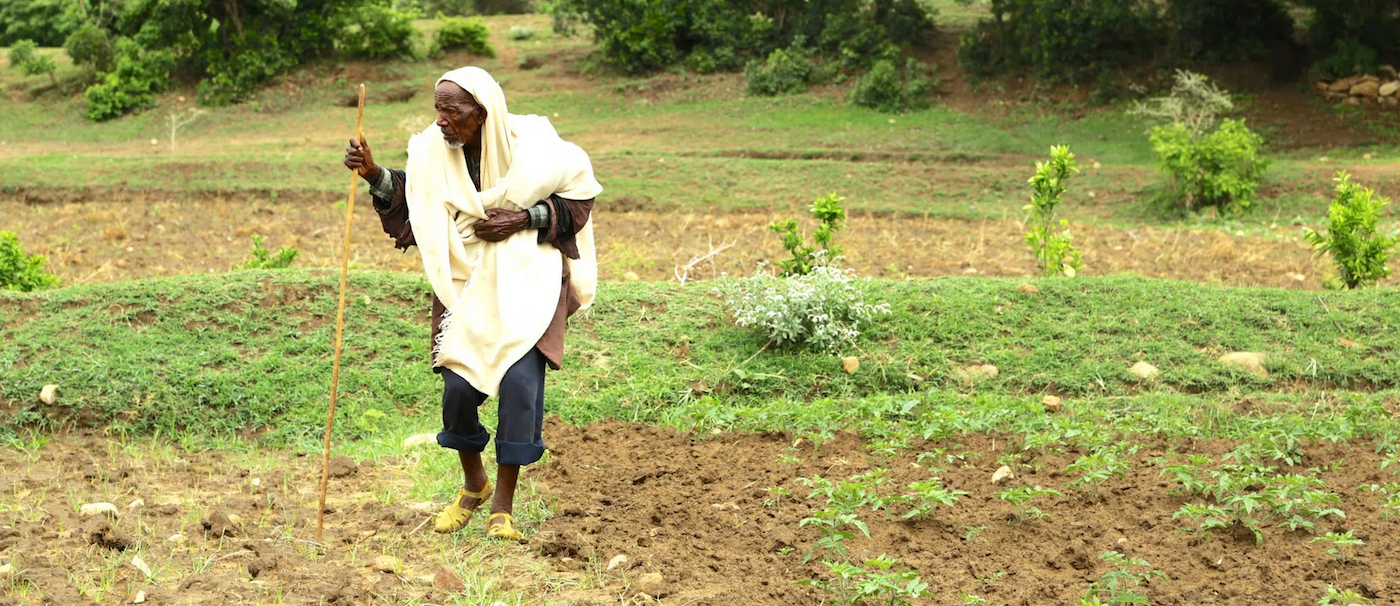
Deep within southern Ethiopia’s agroforestry landscapes, where farmers grow grain and keep cattle, sheep, goats and donkeys, researchers counted more than 4,100 birds as part of an assessment on agricultural productivity and biodiversity.
The researchers also counted some 4,473 individual trees from 52 tree species in the same study, which they believe is the first to link key indicators of biodiversity to more than one indicator of agricultural productivity, considering three products people in rural communities value most: fodder, fuel and food.
This has led to two important new conclusions: that encouraging biodiversity on and around agricultural land likely increases its productivity, and that measurements of productivity must be broadened to include what matters for local livelihoods.
Too often, agricultural productivity is measured through a very narrow lens, such as “mere” crop yields alone. But, according to the study, that has “disregarded local perspectives of what is actually important to people in terms of ecosystem services.
Take, for instance, trees: in addition to potentially growing food, they also benefit crop yield by controlling erosion; capture nutrients for the soil through their roots; help regulate the climate; and provide habitats for animals and insects, including natural enemies of crop pests. The study found that in this region of Ethiopia, agricultural productivity was higher in areas with heavy tree cover than in landscapes where trees had been removed for more crop space.
“We need to understand what would be the best way to produce food with minimum negative consequences on biodiversity,” says lead researcher Frédéric Baudron, challenging the assumption of trading one for the other in faith that agricultural intensification and biodiversity conservation can be achieved at once.
This study comes amid concerns that a rising demand for food and fuel to serve the world’s growing population – projected to reach 9 billion by 2050 – will drive greater agricultural expansion and intensification.
The proliferation of both would likely cause real harm to landscapes and biodiversity, threatening the essential natural constituents of the world’s ability to feed itself, warns Baudron. “That has serious implications for the sustainability of our global food production system,” he says. “We need biodiversity as an essential input.”
He also raises the issue of justice. Biodiversity loss hits hardest the millions of small farmers in developing countries – who make up the majority of farmers worldwide – because they depend almost exclusively on ecosystem services, and not external inputs, for production. And the resulting edible output is crucial for everyone; family farms produce more than 80 percent of the world’s food in value terms, according to FAO statistics.
Baudron says the study’s findings play into how small family farms should be managed through policy and in major restoration efforts, given that tree placement and configuration have enormous implications for biodiversity and ecosystem services it provides.
In other words, biodiversity shouldn’t be a bonus of productive landscapes. The study suggests, rather, that productive landscapes should be designed to make the most of all of the services provided by biodiversity.
The work was part of ‘The Agrarian Change Project’, with funding from the United Kingdom’s Department for International Development (DFID), the United States Agency for International Development (USAID) and the CGIAR Research Program on Wheat.
This article was originally published on Landscapes News. This content is licensed under Creative Commons Attribution-Non Commercial-Share Alike 4.0 International (CC BY-NC-SA 4.0). This means you are free to redistribute our material for non-commercial purposes, as long as you give Landscapes News appropriate credit and link to the original Landscapes News content, indicate if changes were made, and distribute your contributions under the same Creative Commons license. You must notify Landscapes News if you repost, reprint or reuse our materials by contacting G[dot]Lipton[at]cgiar.org.